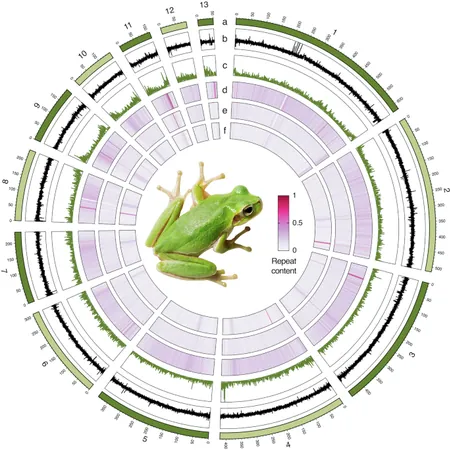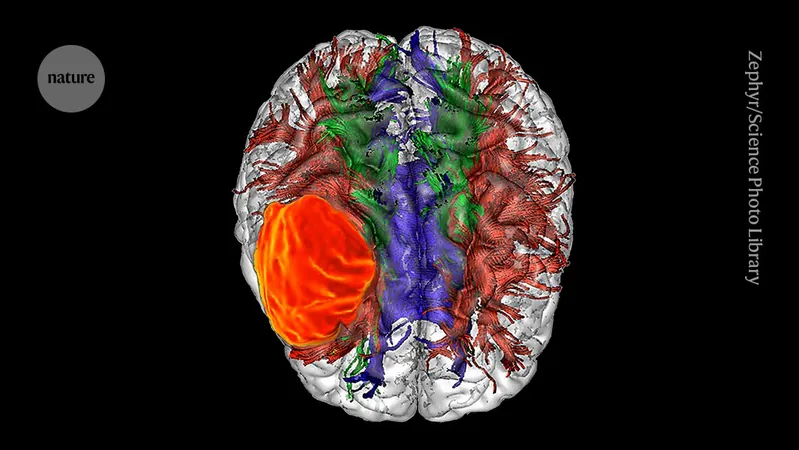
Unlocking the Secrets of the Tyrrhenian Tree Frog: A Groundbreaking Genome Assembly
2025-09-02
Author: John Tan
Meet the Tyrrhenian Tree Frog: A Unique Amphibian Gem
The Tyrrhenian tree frog, scientifically known as Hyla sarda, is a captivating little amphibian measuring just 38-40 mm. Native to the picturesque islands of Sardinia, Corsica, and the Tuscan archipelago in the western Mediterranean, this charming species is closely related to the more familiar European tree frog. With its typical haunts in temperate forests and shrublands, it thrives in freshwater ponds and pools during its prime breeding seasons from spring to summer.
An Uncommon Story of Survival and Adaptation
While H. sarda is classified as 'Least Concern' by the IUCN, it faces threats from habitat loss, making its conservation important. This unique tree frog carries a remarkable biogeographic history, making it an exciting subject for researchers. It underwent a fascinating journey during the last glacial period, spreading from northern Sardinia to Corsica via a temporary land bridge, before leaping over to the Tuscan Archipelago.
Phenotypic Diversity Driven by Evolutionary Forces
Research has shown that as H. sarda expanded its range, it transformed phenotypically. Frogs from the new Corsican territory are notably larger, with superior jumping abilities and different survival strategies compared to their Sardinian relatives. Conversely, individuals from Elba Island, which were colonized later, displayed contrasting traits, highlighting the dynamic nature of evolutionary processes.
Cracking the Genome: A Milestone in Amphibian Research
For the first time, scientists have successfully assembled a high-quality chromosome-level genome for Hyla sarda as part of the Vertebrate Genomes Project. Using advanced techniques such as PacBio HiFi sequencing and Arima Hi-C technology, the painstaking assembly has revealed a genome size of 4.1 Gb, showing a remarkable level of completeness.
A Resource for Future Research and Conservation
This cutting-edge genome assembly is not just an academic achievement. It serves as a crucial resource for understanding the evolutionary history of the Tyrrhenian tree frog, shedding light on how past events have shaped its genetics and phenotypic traits. With 22,847 protein-coding genes identified, this genomic blueprint will aid future studies aimed at conserving this enchanting species.
How They Did It: Behind the Scenes of Genome Assembly
The team behind this groundbreaking work collected samples from a female Tyrrhenian tree frog in Corsica in 2018, meticulously extracting and sequencing the DNA. The combination of cutting-edge technologies and extensive analysis ensured that this genome assembly met the highest standards.
The Importance of Amphibian Genomes in Evolutionary Biology
As amphibians face unprecedented challenges, understanding their genomes becomes even more vital. The Tyrrhenian tree frog stands as a clear testament to the power of genomic studies in uncovering the treasures of evolution and adaptation in these remarkable creatures.
Conclusion: A Bright Future for Research and Conservation
The chromosome-level genome assembly of Hyla sarda not only marks a significant step in amphibian research but also opens doors for conservation strategies that could protect this species amid changing environmental conditions.


 Brasil (PT)
Brasil (PT)
 Canada (EN)
Canada (EN)
 Chile (ES)
Chile (ES)
 Česko (CS)
Česko (CS)
 대한민국 (KO)
대한민국 (KO)
 España (ES)
España (ES)
 France (FR)
France (FR)
 Hong Kong (EN)
Hong Kong (EN)
 Italia (IT)
Italia (IT)
 日本 (JA)
日本 (JA)
 Magyarország (HU)
Magyarország (HU)
 Norge (NO)
Norge (NO)
 Polska (PL)
Polska (PL)
 Schweiz (DE)
Schweiz (DE)
 Singapore (EN)
Singapore (EN)
 Sverige (SV)
Sverige (SV)
 Suomi (FI)
Suomi (FI)
 Türkiye (TR)
Türkiye (TR)
 الإمارات العربية المتحدة (AR)
الإمارات العربية المتحدة (AR)